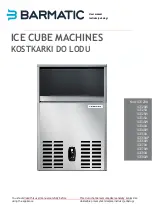
15
4. Don’t use fresh or tinned yeast – they won’t work properly with your breadmaker.
5. Check the “best before” date on the sachet of yeast – if it’s approaching its “best
before” date, don’t take any chances – throw it out and buy some more.
6. You may also see “fast action’ or “bread machine” yeast – really potent yeasts
that can make dough rise up to 50% faster. If you want to use these, you’ll need
to do a bit of experimenting to get the best results. You could start off by trying
them with the fastbake programs.
Liquid
1. The liquid ingredient is normally water or milk, or a mixture of the two.\
2. Water makes a crispier crust. Milk gives a softer crust with a velvety texture.
3. The liquid should be warm, not hot or cold. Both hot and cold water will inhibit the
yeast.
4. Some recipes call for hand-hot water (that’s 35°C-50°C/95°F-122°F), to speed up
the process. Only the fast yeasts can handle this temperature.
5.
Don’t use milk with the timer; it might curdle before the bread-making process
starts.
Butter/fat
These make the dough tenderer and enhance the flavour, giving the finished loaf a
richer quality. They help to retain moisture, making the bread keep fresh longer.
Margarine or olive oil can be used instead of butter, but they are less effective.
Low fat spread
Don’t use low fat spread. Never mind what the manufacturer says, it’s designed for
spreading, not for cooking. It’s “low fat”, where the recipe needs “fat”.
Sugar
1. Sugar activates and feeds the yeast, allowing it to grow. It adds flavour and
texture, and helps with browning the crust. Many sachet yeasts do not need
sugar to activate.
2. Honey, syrup, or molasses may be used instead of sugar, provided the liquid
ingredient is adjusted to compensate.
















































